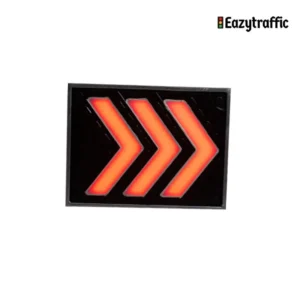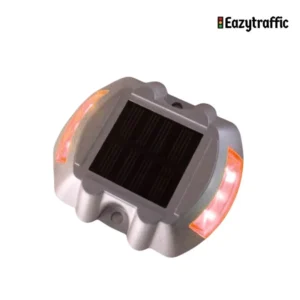
Red Flashing Solar Road Stud whoelsale
200mm (8’’) LED Traffic Light 200mmsignal lights are mainly used
Home » Solar Powered Crosswalk Signs
Eazytraffic specializes in manufacturing solar-powered crosswalk signs that enhance pedestrian safety while promoting sustainability.
Our signs feature advanced solar technology for optimal visibility and are built to withstand various weather conditions.
We offer customizable solutions to meet your specific needs.
Choose Eazytraffic for innovative, high-quality traffic solutions that prioritize safety and efficiency!

Eazytraffic offers a variety of customizable solar-powered crosswalk signs designed to enhance pedestrian safety and visibility at crosswalks. These signs leverage solar energy for reliable operation and can be tailored to meet specific needs.

200mm (8’’) LED Traffic Light 200mmsignal lights are mainly used

200mm (8’’) LED Traffic Light 200mmsignal lights are mainly used

200mm (8’’) LED Traffic Light 200mmsignal lights are mainly used

200mm (8’’) LED Traffic Light 200mmsignal lights are mainly used

200mm (8’’) LED Traffic Light 200mmsignal lights are mainly used

200mm (8’’) LED Traffic Light 200mmsignal lights are mainly used
Here are six key customization options for solar-powered crosswalk signs:
1. Sign Size and Shape
Choose appropriate dimensions and shapes for optimal visibility and recognition.
2. Color and Graphics
Select high-contrast colors and incorporate custom graphics or logos for clarity and branding.
3. LED Flashing Lights
Customize flash patterns and brightness levels to enhance visibility during day and night.
4. Reflective Materials
Use reflective sheeting and borders to improve visibility in low-light conditions.
5. Sensors and Controls
Add motion sensors for activation and remote control features for easy operation.
6. Durability Features
Select weather-resistant materials and secure mounting options for stability in various environmental conditions.
These options will help enhance the effectiveness and visibility of your solar-powered crosswalk signs.
Solar-powered warning lights are lighting systems that utilize solar energy to operate, typically incorporating solar panels, batteries, and LED technology. The solar panels convert sunlight into electrical energy, which is stored in batteries for later use, allowing the lights to function even during nighttime or overcast conditions. This technology is particularly useful for providing visibility in remote areas or during emergencies, as it eliminates the need for electrical wiring and reduces energy costs.
Solar-powered warning lights are widely used in various applications, including traffic control, construction sites, emergency response, and maritime navigation. They serve as warning signals to alert drivers, pedestrians, or workers of potential hazards. For instance, they can indicate roadwork zones, warn of dangerous curves, or mark hazardous areas. Their portability and independence from traditional power sources make them ideal for temporary or remote installations.
When choosing solar-powered warning lights, consider the following factors: brightness (measured in lumens), battery capacity (to ensure adequate runtime), solar panel size (for efficient energy collection), and durability (to withstand environmental conditions). Additionally, look for features such as adjustable light intensity, motion sensors for energy efficiency, and weatherproof ratings to ensure reliability in various climates. Evaluating the specific needs of your application, such as visibility distance and mounting options, is also essential.
The manufacturing process of solar-powered warning lights involves several key steps:
Solar-powered warning lights provide significant environmental benefits by utilizing renewable energy, reducing reliance on fossil fuels, and lowering greenhouse gas emissions. Their energy independence means they can be deployed in remote locations without the need for electrical infrastructure, minimizing ecological disruption. Additionally, solar lights contribute to energy savings over their lifespan, further promoting sustainability. By investing in solar technology, organizations and municipalities can enhance their environmental responsibility while maintaining safety and visibility.
Solar-powered warning lights offer several advantages over traditional lighting solutions, including lower operational costs since they rely on free solar energy, reduced installation complexity due to the absence of wiring, and the ability to function in off-grid locations. However, traditional lights may provide more consistent illumination, especially in regions with limited sunlight. The choice between solar and conventional systems ultimately depends on specific use cases, budget, and environmental considerations.
Send Your Inquiry Today

